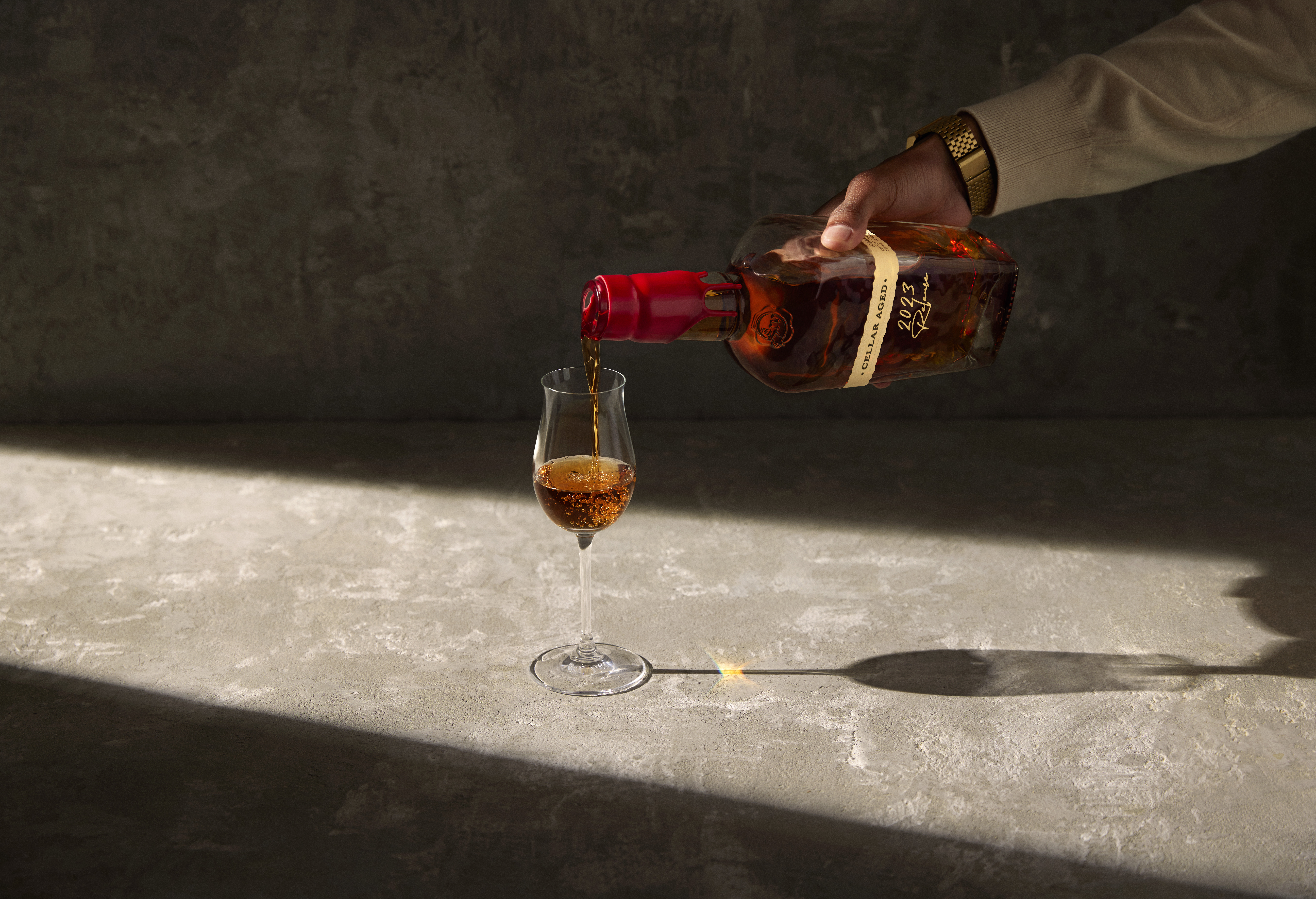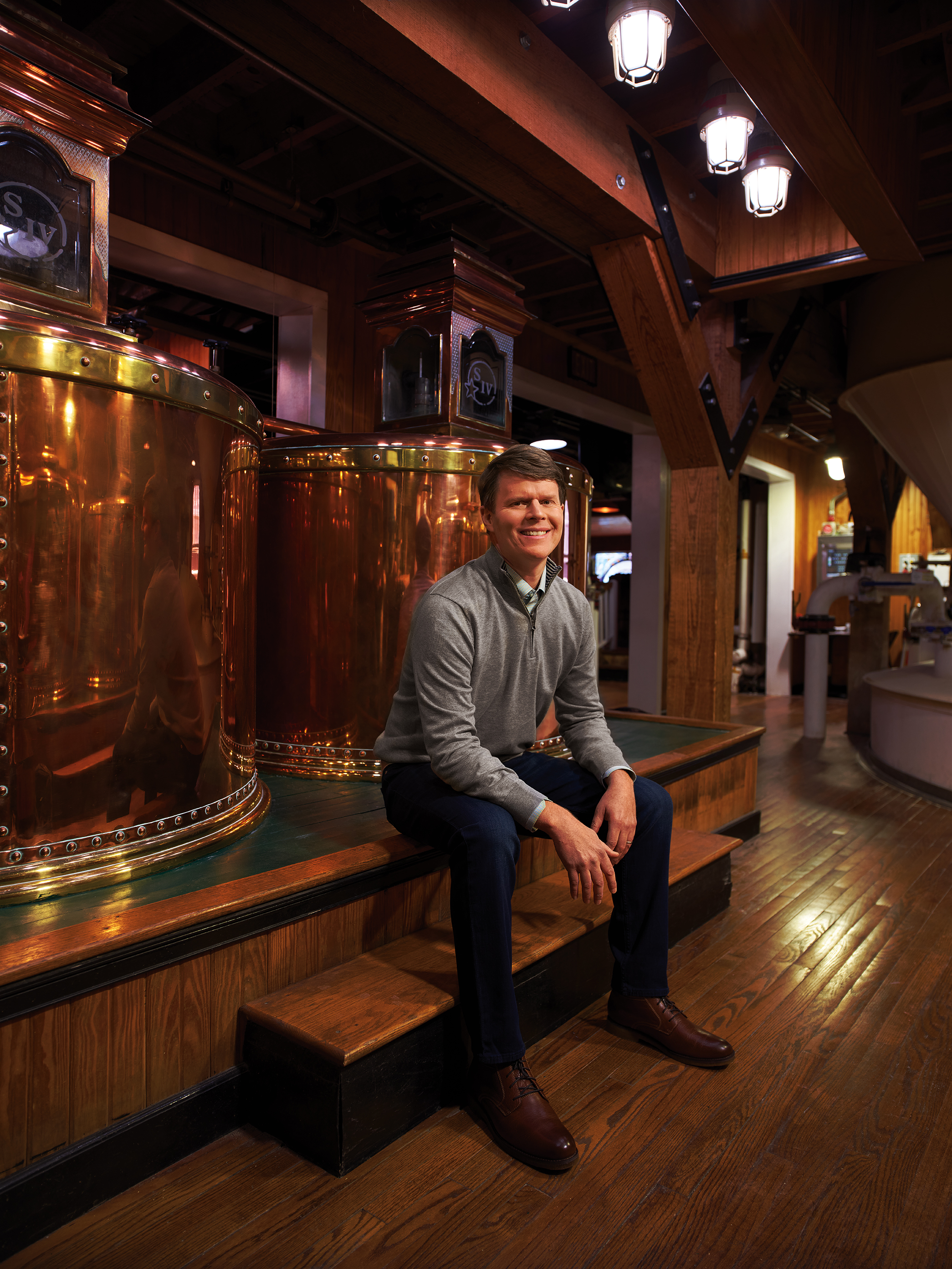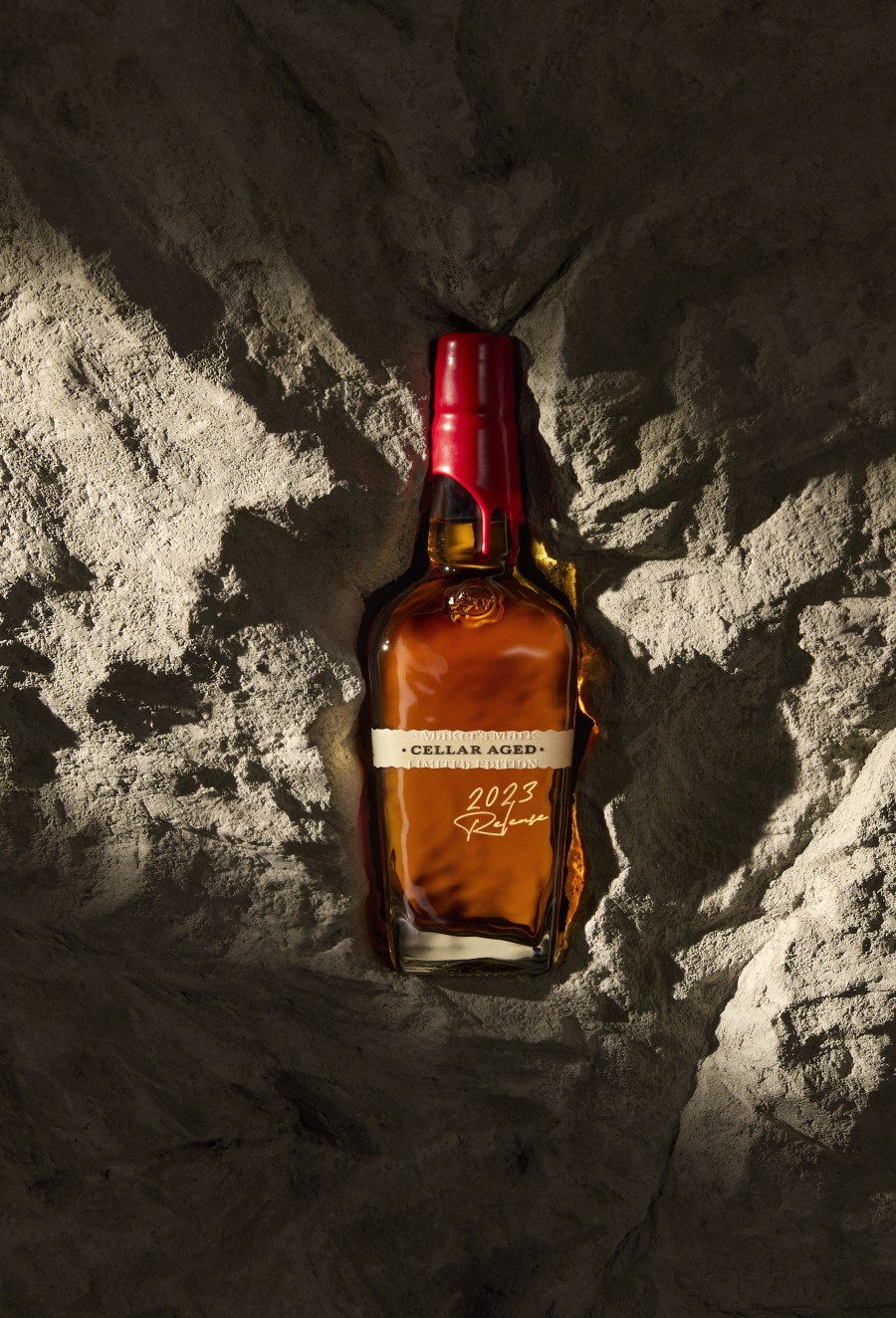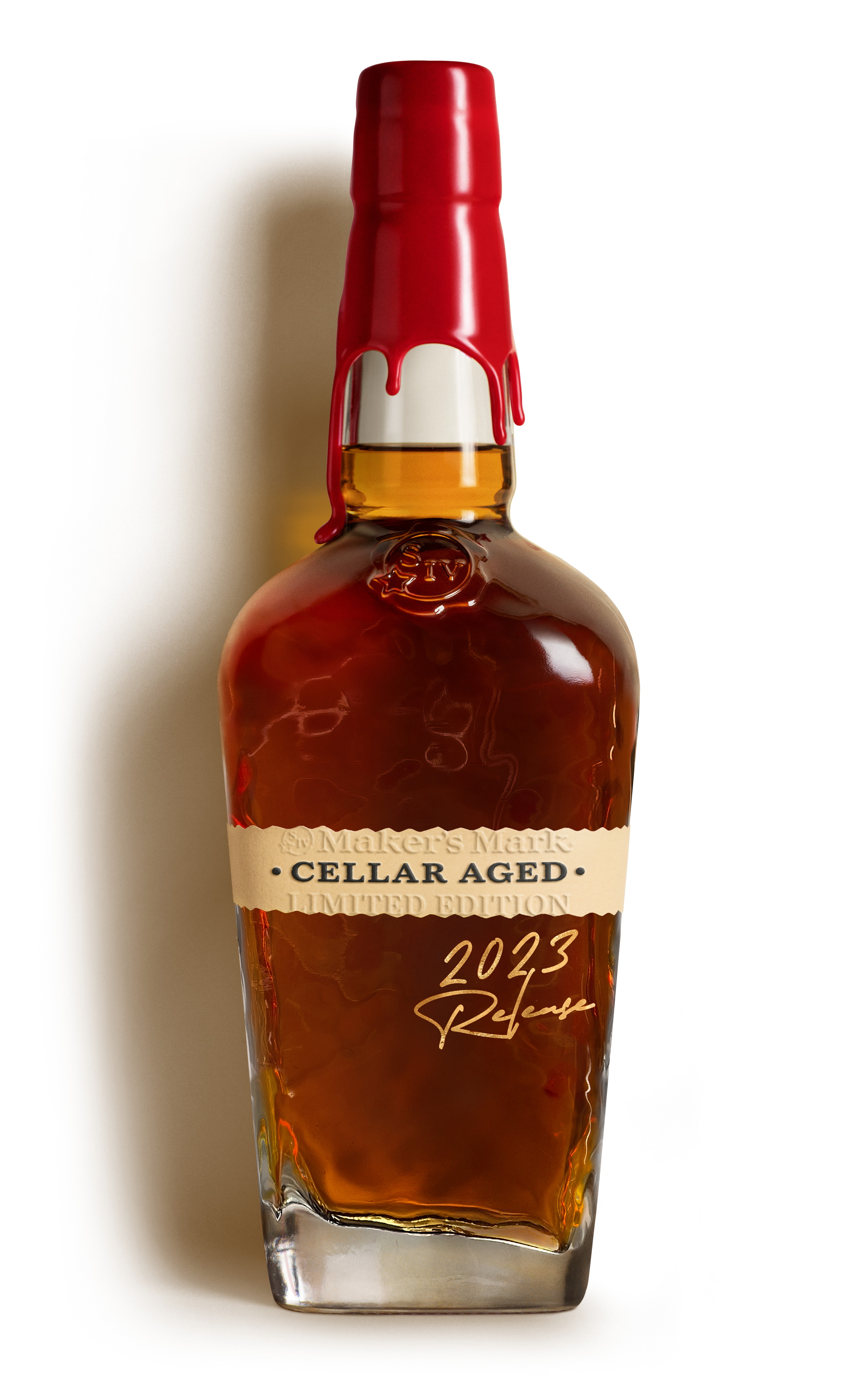Spirit Of The Week: Maker’s Mark ‘Cellar Aged’ Bourbon
For their oldest and most premium bourbon yet, Maker’s ages barrels in cool limestone caves.

For the internationally beloved bourbon wizards Maker’s Mark the concept of tradition isn’t mere marketing; it is core principle. Since Bill Samuels Sr. first started distilling in the hills of Kentucky in 1953 certain founding DNA remain entrenched—beginning with their Loretto distillery using only a single mashbill for all their bourbon.
Their famously wheated (70% corn / 16% soft red winter wheat / 14% malted barley) mashbill contributed to the founder’s goal of crafting the smoothest bourbon imaginable. While other wheated bourbons existed (think most famously W.L. Weller and Pappy Van Winkle) the recipe was uncommon both then and now.
We first met Bill Samuels Sr.’s grandson, and current Managing Director, Rob Samuels years ago when visiting Loretto, and the 8th-generation Master Distiller took great pains to show us the diligence his family’s label continues to pledge to these foundational traditions.
Strolling the grounds of Star Hill Farm with Samuels quickly illuminated how, for Maker’s Mark, the whisky is always prioritized. Even if a step in the process is inefficient or labor intensive, if the Samuels family feel it will add to the quality of the final bourbon it gets done.
“Efficiency,” he stated proudly at the time, “is overrated.”

(Maker’s Mark)
This credo reveals itself time and time again: Humans still hand-dip the bottle cap in signature red wax; a vintage century-old press prints every label, which is also torn by hand; in the rickhouse barrels are regularly shifted to different locations in order to ensure each experiences similar and equal aging climates—an extremely rare and labor-intensive procedure.
Tradition is evident even in something as simple as the Samuels opting for the Scottish spelling of their whisky.
Then there’s the campus itself. One of the most beautiful and serene distilleries in the world, Star Hill Farm is as much arboretum (flourishing with 300 species of trees and flora) and apiary as it is a whisky-making venture.
A little over six years after first touring Star Hill Farm with Samuels he leads the way on their newest bottle, the label’s oldest and most premium expression to date: Maker’s Mark “Cellar Aged.” What makes Maker’s Mark Cellar Aged special is that after six long years in the rickhouse, the whisky was then moved to Star Hill Farm’s cool cellars for an additional five-to-six years of maturation.
Time slows in these dank limestone cellars, barrel-influenced tannins are reduced from the cooler aging, and more complex flavor notes are allowed to embellish from their wheated bourbon. In the end the blend uses barrels aged a total of 11 years (13%) and 12 years (87%), but age statements aren’t really what matters to Maker’s Mark—rather their age-to-taste philosophy. Meaning they only bottle the bourbon when the Samuels clan decides it’s ready, as with all Maker’s Mark expressions.
Here’s what the third-generation Maker’s Mark steward had to say about not only this new eminently smooth bourbon but the core principles of the Maker’s name, and why they remain stronger than ever.
As an 8th generational Kentucky whiskymaker—and third-gen steward of the Maker’s Mark lineage—how important is tradition to both Maker’s Mark and your family?
When my grandparents Bill Samuels Sr. and Margie Samuels created Maker’s Mark, they had a clear flavor vision to make a whisky people actually wanted to drink. Bourbon at that time was much harsher and considered a commodity spirit. That vision, to make a richer, smoother, creamier-sipping bourbon permeated everything they did, including the purchase of the land the Maker’s Mark distillery currently sits on. They purchased the plot for many reasons, chief among them the water source. In fact, Maker’s Mark is the only distillery in Kentucky that sources all production water from a controlled source—our spring-fed lake—and to own our watershed.

When it came to the whisky itself they employed a theory of “purposeful inefficiency.” As you noted, everything we do, from the hand rotating of barrels to the sourcing of our wheat, to the construction of our limestone cellar, isn’t done to produce the greatest number of good barrels we can rush to market. Rather, these were all purposefully considered decisions made to craft the best and most consistent bourbon we could.
Even as we continued to innovate, with expressions like Maker’s Mark 46, the Wood Finishing Series, and now with the release of Cellar Aged, those guiding principles remained true: staying true to the flavor vision of my grandparents and producing the best bourbon we possibly can.
Other than the processes we mentioned, what other time-consuming steps does Maker’s Mark employ?
I can’t overemphasize the remarkable work being conducted by our tasting panel. This group of 32 employees are tasked with sampling our liquid, on average, five times from distillation to bottling to taste (not age), in order to ensure that our bourbon is developing along the standards of quality and flavor we demand.
Only when they’ve determined a barrel has reached our founders’ taste vision does it get pulled from our rickhouses for blending and bottling. It’s a long process, requiring a great deal of patience, but they are the reason why we can confidently and proudly say that every barrel of Maker’s Mark is aged to taste, not time.
Recently Maker’s committed to regenerative farming. This is a noble pledge but one that some brands would find too difficult or expensive. How are environmental concerns and sustainability major considerations in the growth of Maker’s Mark?
The land and the people are what make Maker’s Mark what it is. As it relates to the land, Maker’s Mark sits on more than 1,100 contiguous acres of land that make up the distillery and Star Hill Farm. From it we are gifted many of the resources that go into making our bourbon. As such we’ve always, since our founding, saw a responsibility and directive to be good stewards of the land. Through this approach we are able to cultivate bourbon that betters the world, while crafting the most flavorful products possible.
Putting words into practice we established the world’s largest repository of American White Oak trees for research purposes, a first-of-its-kind genome mapping project of the American White Oak species. We’ve established a 33-acre natural water sanctuary on the distillery grounds to preserve and protect the land that filters the water source now and in the future. We have installed the apiaries around the grounds that house and protect the bees that pollenate the area.
We’ve also worked with our grain suppliers to adopt similar practices in hopes that our bourbon may one day be made fully by regenerative practices that give more to the land than they take.
Today, we are proud to say that we are B Corp Certified and the first distillery in the world to receive certification from Regenified. These are just great acknowledgments to the work we have been committed to doing since inception.
Have cellar-aged barrels been used before for other Maker’s expressions?
Our LEED certified limestone cellar, carved directly into the face of the naturally occurring limestone hillside, was first created to mature our Maker’s Mark 46 expression. When we developed Maker’s Mark 46, we needed to find a solution for secondary aging that would keep the liquid at a consistently cool temperature of around 50 degrees year-round. Knowing the excitement around the expression, we also needed a place to store our barrels in anticipation of the demand we were expecting. Fortunately, we found an elegant solution in nature.
Currently there are only three groups of barrels that are aged in our limestone cellar: Maker’s Mark Cellar Aged, Makers Mark 46 and barrels from our Maker’s Mark Private Selection program. Maker’s Mark Private Selection is a first-of-its-kind barrel program that allows our retail or restaurant partners to purchase a barrel and explore their own taste visions of Maker’s Mark.

What taste or profile effects were you expecting from cellar aging?
There is a commonly held notion in the whisky world that “older means better,” and people have been clamoring for an extra-aged whisky from Maker’s Mark for years. However at Maker’s Mark we age to taste, not time. To have simply continued to age our barrels in our rickhouses would have betrayed that vision. As the whisky would continue to age, the liquid would continue to pull tannins from the wood, bringing with it that stringent taste that is counter to the vision my grandfather had for a smooth, rich bourbon, without the bite.
We asked ourselves: What if we could continue the aging process and simultaneously slow down the tannic process? Our cellar allows us to do just that. After the liquid had spent about six years in our rickhouses, we tested moving our barrels to our naturally climate-controlled cellar. Here the liquid has the benefit of continuing to mature, while the lower temperature slows down the tannic process.
The result is Maker’s Mark Cellar Aged. A testament to our drive to continue to push the boundaries of what great bourbon can be, while staying true to our guiding principles and flavor vision.
Maker’s Mark Cellar Aged comes bottled at 57.85% ABV (115.7 proof) with an SRP of $150.
Follow Deputy Editor Nicolas Stetcher on Instagram at @nickstecher and @boozeoftheday.
